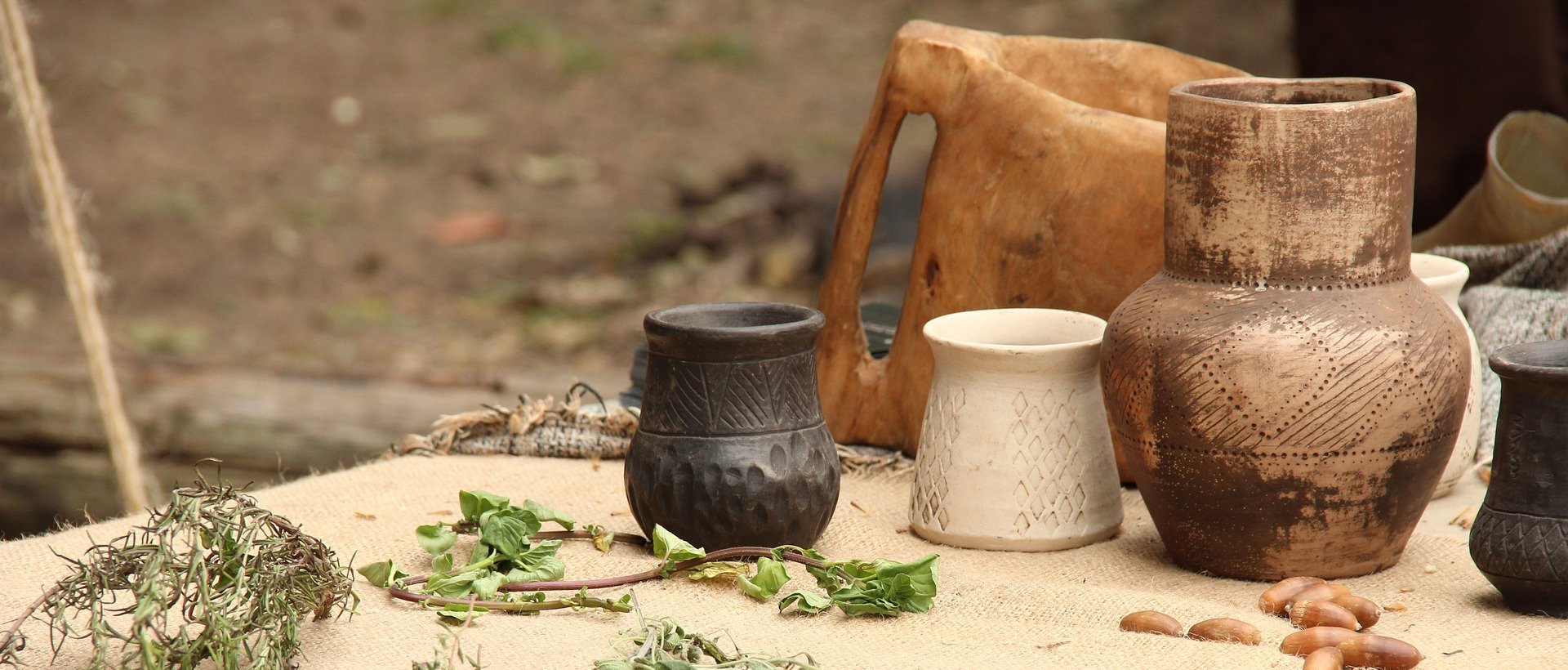Medieval Food and Drink
Posted on 31st December 2020
In the early Middle Ages, the entire household including the servants ate together, but in the later period this tradition was broken in wealthier families. The lord or master retired to his private quarters to eat alone or with a few guests, keeping the best food for himself; leaving more inferior food for everybody else; the women of the household ate alone.
Meat - Available but expensive.
Beef, Pork and Lamb
Venison
Rabbit and Hare
Fish - Both fresh and salt water fish.
Trout and Pike
Herring and Salmon
Whiting, Plaice and Cod
Shellfish - Eaten by households near the coast.
Crab and Oysters
Mussels and Cockles
Vegetables -
Onions and Garlic
Parsnips and Beetroot
Lettuce, Cabbage, Fennel and Leeks
Peas, Beans and Lentils
Fruit - Availability depended on the location.
Pomegranates
Apples, Pears and Quince
Grapes
Wild Strawberries
Figs and Dates
Rye, Barley, Buckwheat and Oats were available in the later middle ages and a bread (Manchet) was made from wheat flour.
Milk and Cheese were also available and honey was used to sweeten the food.
During the later middle ages spices were imported from other countries, these included:
Cinnamon
Nutmeg and Ginger
Saffron, Turmeric and Mustard
Garlic and clove
Wealthy - Only ate two meals a day, the first being at around 12pm; it was considered weak to eat early in the day.
Very few vegetables were eaten by the wealthy as they believed that food which came from the ground was only suitable for the poor and this food was mainly vegetables.
Poor - Known to eat more, smaller meals during the day, as they needed to retain their strength for manual labour. Breakfast was eaten by peasants, women, children and the elderly and sick. Men carried bread and cheese to eat during the day while working in the fields. Cheese was the staple diet of farmers along with bread.
A stew or soup (Pottage) was made with rye or barley bread to go with it.
Meat was expensive, but beef, pork and lamb were available to the poor. The only vegetables available were ones they grew themselves; fruit was picked wild from the countryside.
Drinks - The most common drink in England during this period was beer or ale as it was unsafe to drink water. This was made from oats, barley or wheat; the quality depended on the grain used.
The ale was always used when freshly produced, as it had no preservatives.
Mead made by fermenting honey and water was also drank, often with fruit and spices added.
Wine was popular, though always watered down, however in England and the Northern Territories it was expensive so only the wealthy could afford it. The quality depended on the grapes used and how many grape pressings it went through.
Buttermilk was kept for children and the elderly only.
Tagged as: Junior Middle Ages
Share this post:





